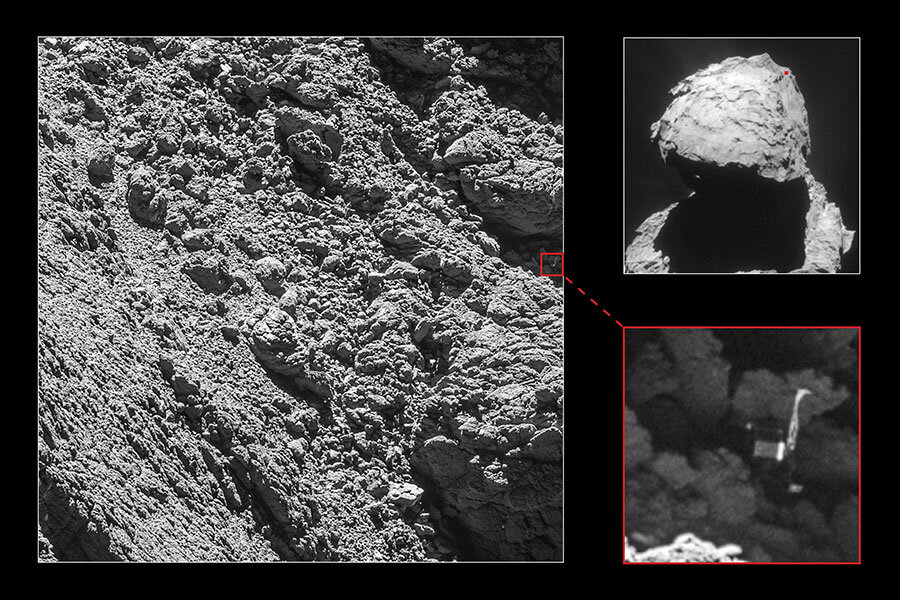ESA finds lost Philae lander just in time to crash it into a comet
Loading...
| Berlin
Europe's Rosetta space probe has located its lost Philae lander, wedged in a "dark crack" on a comet, the European Space Agency said Monday.
Rosetta's camera finally captured images on Friday of the lander on comet 67P/Churyumov-Gerasimenko, weeks before the probe's own mission ends, the agency said . The pictures showing the lander's body and two of its three legs were taken as Rosetta passed within 2.7 kilometers (1.7 miles) of the surface.
After being launched in 2004, Rosetta took 10 years to accelerate and catch up with comet 67P. In November 2014 it released Philae, achieving the first landing of a spacecraft on a comet.
Philae bounced after its initial touchdown and its precise location on the comet couldn't be pinned down until now, though its general vicinity was known.
After sending data to Earth for three days its battery ran out and it went into hibernation, only to recharge enough as the comet came closer to the sun to communicate briefly with Rosetta in mid-2015.
ESA plans to crash Rosetta into the comet Sept. 30, because the probe is unlikely to survive lengthy hibernation in orbit as the comet heads away from the sun.
Data from Rosetta and Philae have already improved scientists' understanding of the nature of comets and the role they played in the early universe. Analyzing the data fully is expected to keep researchers busy for years.
In its first 57 hours on the planet, the little lander sent a wealth of information back to scientists on Earth, as The Christian Science Monitor's Pete Spotts reported in Nov. 2014:
The lander’s science team is still analyzing the data Philae sent back from its nine instruments. But the Nov. 12 landing yielded an unexpected insight when the lander’s anchoring system failed to deploy and it bounced twice through comet’s weak gravity – once with a hang time of just under two hours.
The bounces suggested that the nucleus has an unexpectedly stout crust beneath a layer of dust. Indeed, the science team now reports that the comet appears to have a crust of rock-solid ice beneath a four- to eight-inch layer of dust. Instruments also detected organic molecules, although researchers are still working to identify them.
In addition, researches say an experiment to build a 3-D image of the core’s interior successfully gathered all of the data needed to build the image – critical to understanding how the comet formed.
At the time, the lander's project manager, Stephan Ulamec, told Mr. Spotts that he was "confident that Philae will resume contact with us and that we will be able to operate the instruments again.” But as time wore on, the team grew anxious that they had lost the lander forever.
"We were beginning to think that Philae would remain lost forever," said Patrick Martin, ESA's Rosetta mission manager. "It is incredible we have captured this at the final hour."
Rosetta project scientist Matt Taylor said that locating Philae provides missing information "needed to put Philae's three days of science into proper context."







